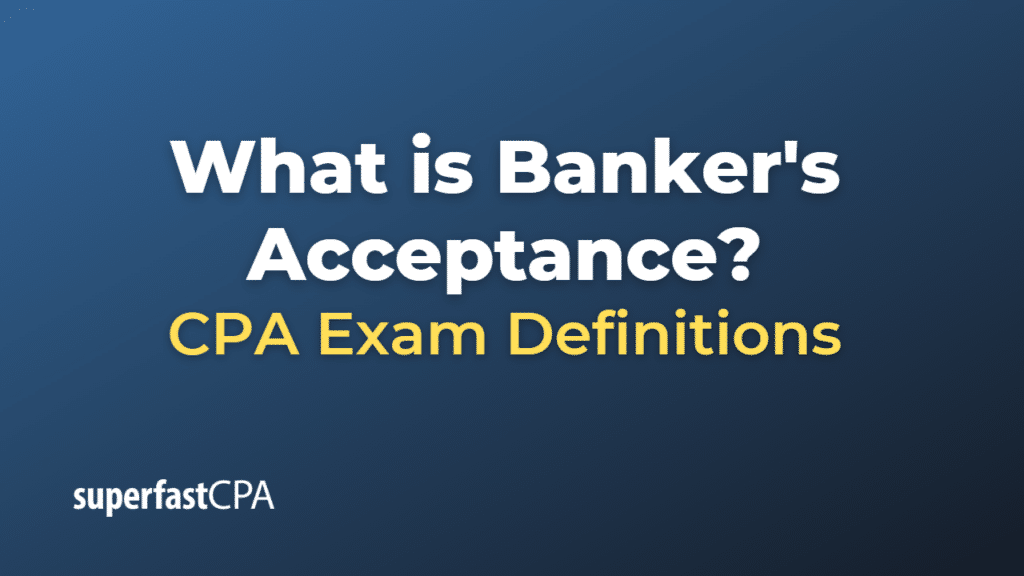Banker’s Acceptance
A banker’s acceptance (BA) is a short-term debt instrument that is issued by a company and guaranteed by a commercial bank. It is a negotiable financial instrument used to facilitate international trade transactions, as it provides a secure and efficient means of payment between the buyer and the seller. Banker’s acceptances are typically used in the context of import and export transactions, where the buyer and seller may be in different countries and require assurance of payment.
Here’s how the banker’s acceptance process works:
- The buyer (importer) and seller (exporter) agree on a transaction, and the buyer requests a banker’s acceptance from their bank.
- The buyer’s bank reviews the transaction and, if it approves, issues a banker’s acceptance. The bank guarantees the payment of the face value of the BA upon its maturity, usually within 30 to 180 days.
- The buyer provides the BA to the seller as a guarantee of payment for the goods being imported or exported.
- The seller may choose to hold the BA until maturity or sell it at a discount to a third party, such as an investor or another bank, before maturity to receive immediate cash.
- At maturity, the holder of the BA presents it to the issuing bank, which pays the face value of the instrument.
Banker’s acceptances are considered low-risk investments because they are guaranteed by a commercial bank and are backed by the underlying goods involved in the trade transaction. They provide several benefits, including facilitating international trade transactions, providing assurance of payment to the seller, and offering a means of short-term financing for the buyer.
Example of Banker’s Acceptance
Let’s consider a fictional example of an international trade transaction that uses a banker’s acceptance.
Company A, based in the United States, wants to import goods worth $200,000 from Company B in Germany. Given the distance and lack of familiarity between the two companies, Company B wants a secure form of payment to ensure they will receive the funds for the goods they ship.
- Company A (the buyer) approaches its bank, US Bank, and requests a banker’s acceptance to facilitate the transaction. Company A provides the necessary transaction details, such as the purchase agreement, to US Bank.
- US Bank reviews the transaction and, upon approval, creates a banker’s acceptance with a face value of $200,000 and a maturity of 90 days.
- Company A provides the banker’s acceptance to Company B (the seller) as a guarantee of payment for the goods.
- Company B may choose to hold the BA until maturity or sell it at a discount to a third party, such as an investor or another bank, before maturity to receive immediate cash. In this example, let’s say Company B decides to hold the BA until maturity.
- Company B ships the goods to Company A as agreed.
- At the end of the 90-day maturity period, Company B presents the banker’s acceptance to US Bank for payment.
- US Bank pays Company B the face value of the banker’s acceptance ($200,000), completing the transaction.
In this example, the banker’s acceptance provided a secure and efficient means of payment between Company A and Company B, facilitating the international trade transaction and ensuring that Company B received payment for the goods they shipped.













